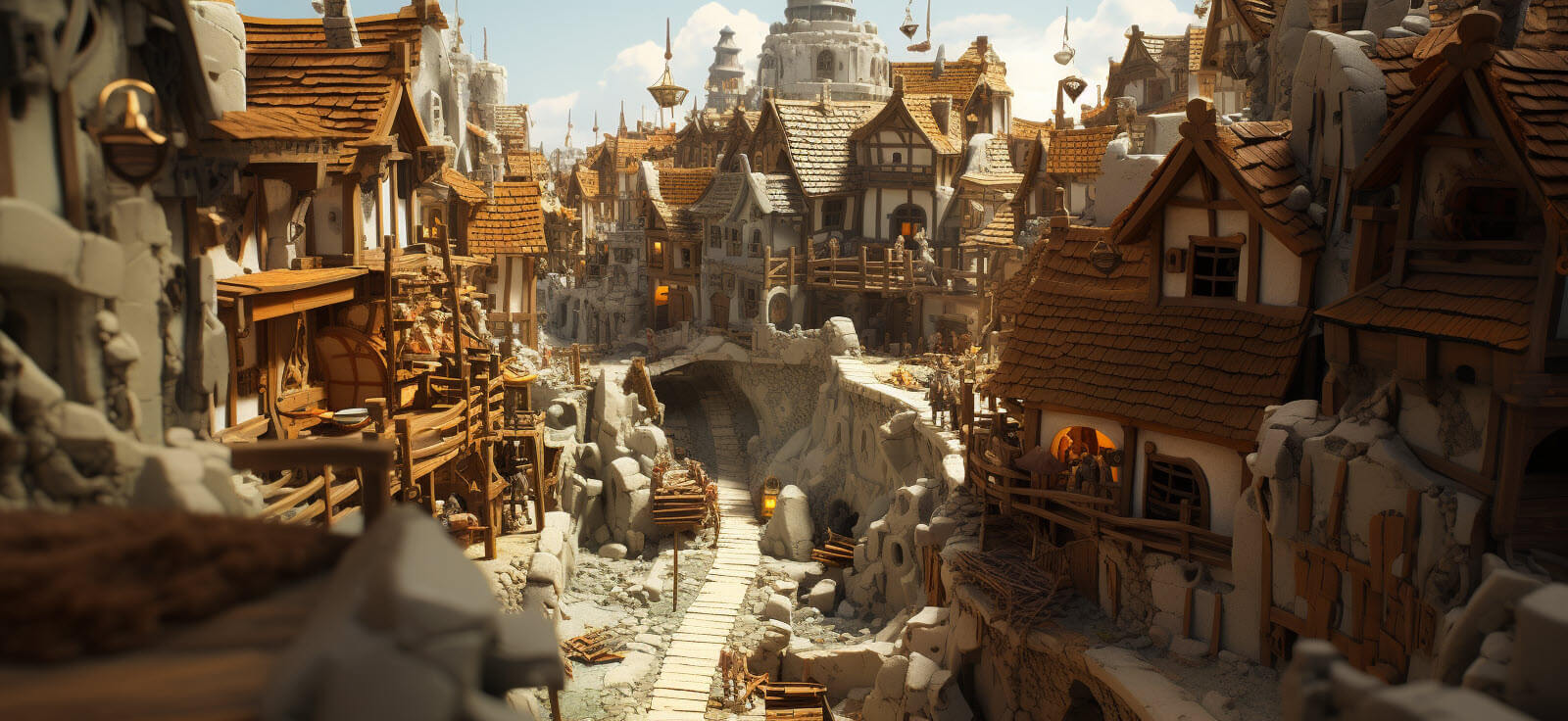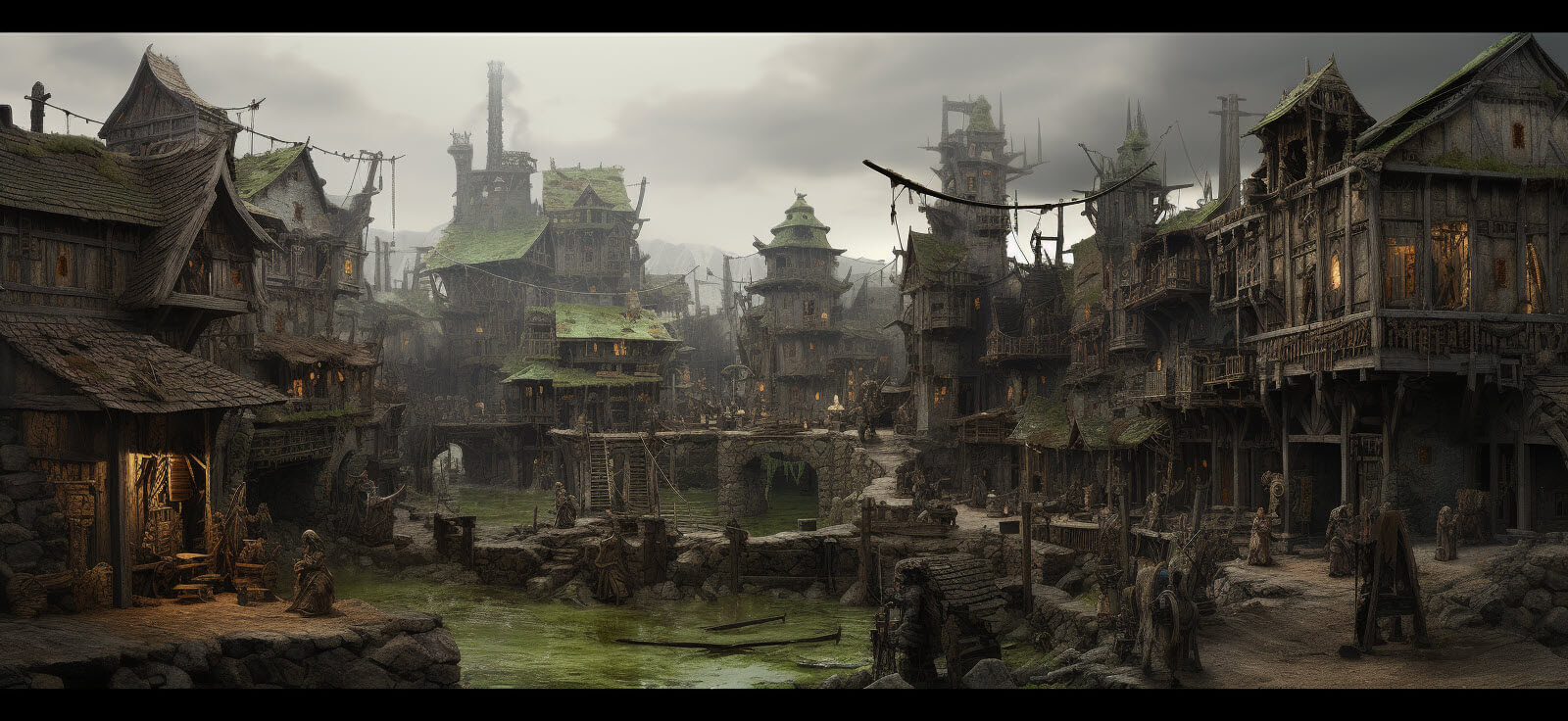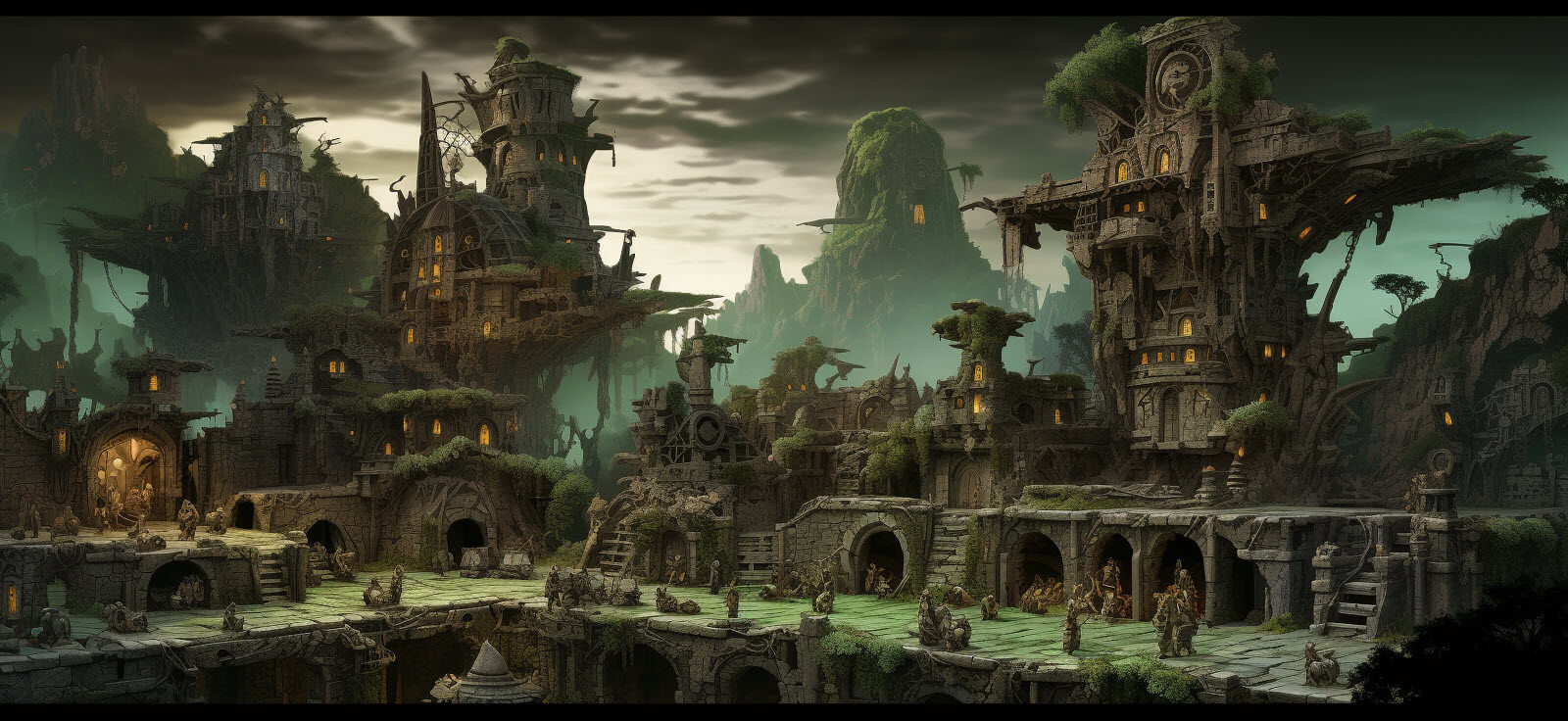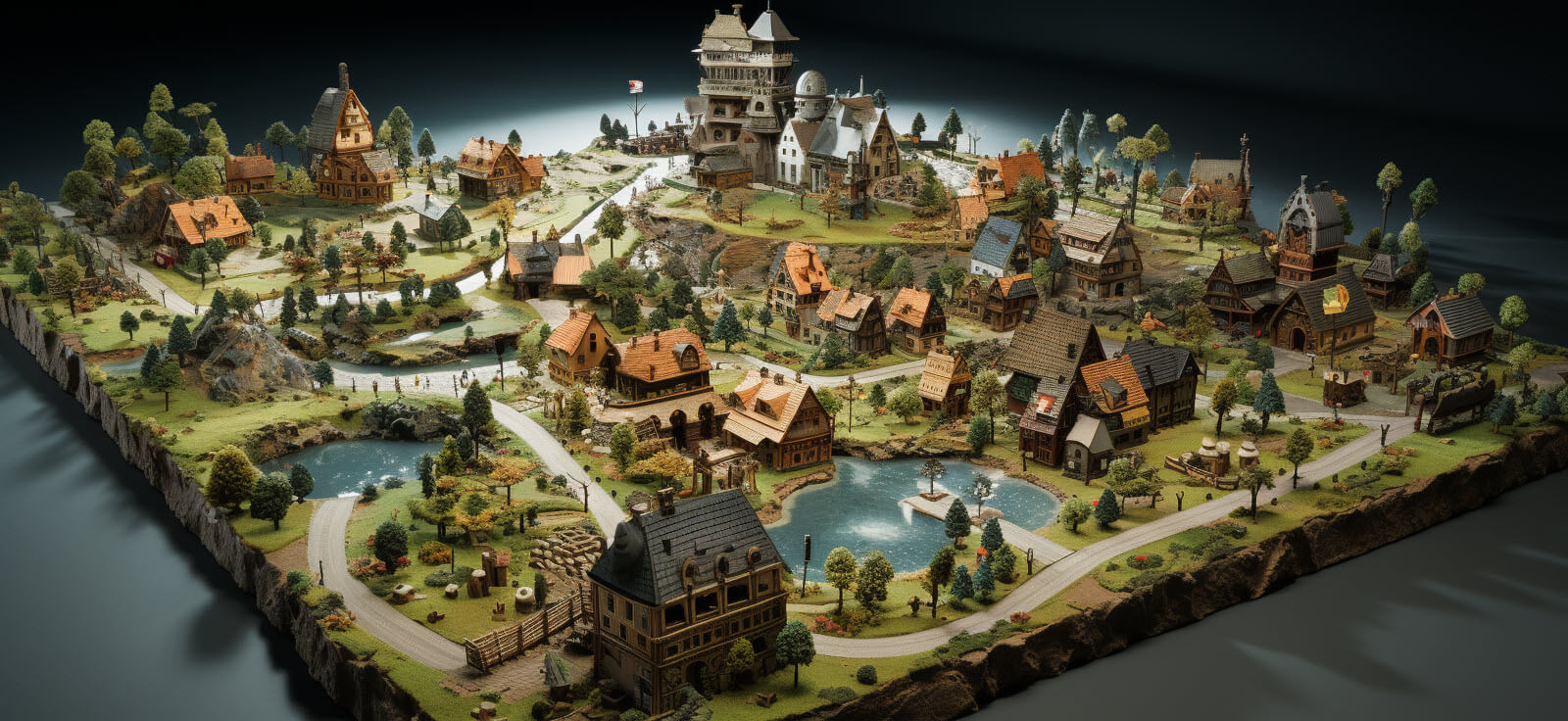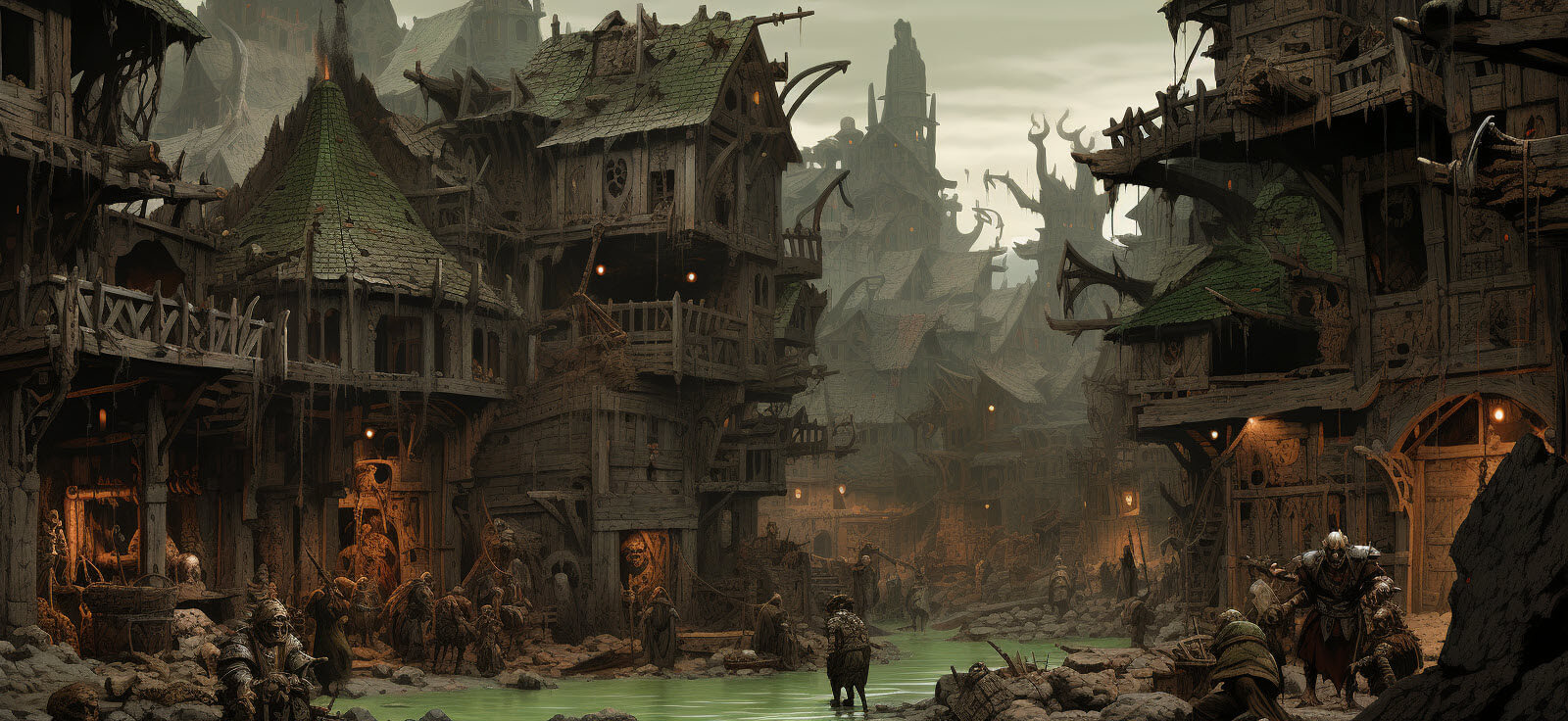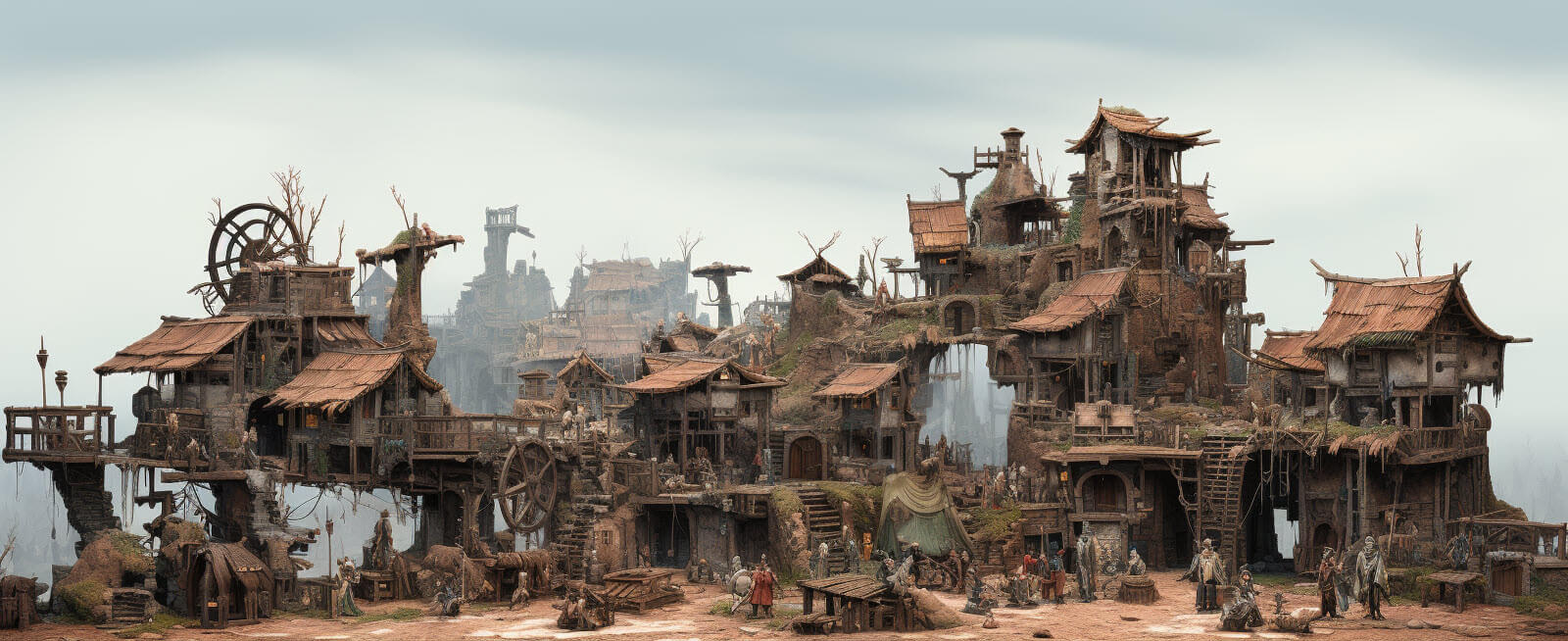D&D Tools: Enhancing Your Gameplay Experience
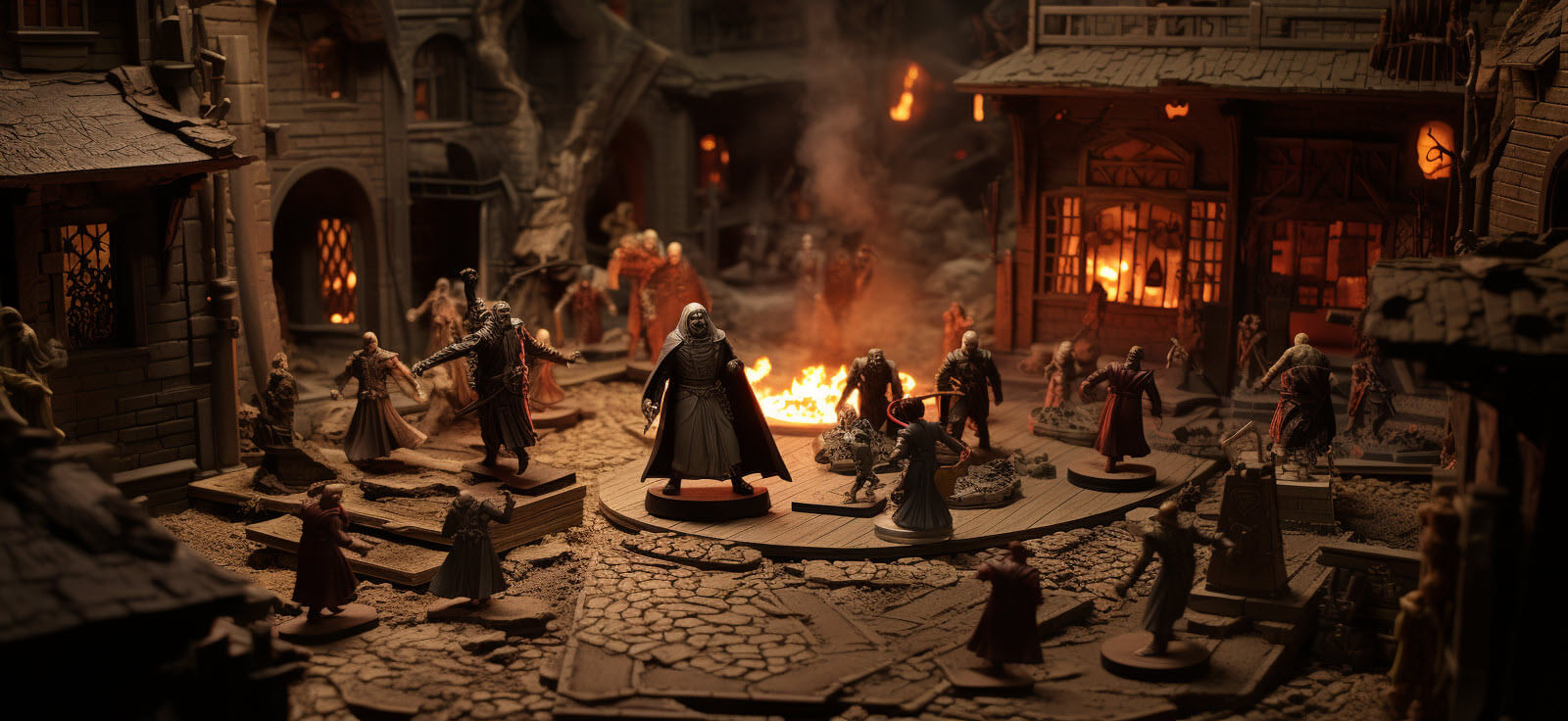
As a veteran player character in the world of Dungeons & Dragons, one must be well-prepared and armed with the appropriate weapon of choice. Part of this preparation includes gaining an understanding of your identity and the value it brings to your gameplay experience.
One way to achieve this is by exploring the different marketing strategies available in various regions where D&D tools and resources are sold. The reason behind this is that different kinds of stores may offer unique bits of equipment and items that could enhance your character’s abilities.
Review your game session preferences and anticipate the tasks you might undertake under different circumstances, ensuring that your choice of tools aligns with your play style.
Setting clear goals for your character and understanding the kind of stuff required for their success in the realm will make all the difference.
Another source of inspiration might be delving into the history of your character, which could create a richer version of their story, allowing you to connect with other people throughout the game and even contribute to a post in the community forum, engaging your senses.
Those who prefer to use tools to enhance their gaming experience, may choose to utilize a variety of weapons, such as swords, guns, bows, and other items, to help them succeed in their adventures.
Picture this: Your dungeon master is weaving a thrilling tapestry of fantasy and adventure – the heroes are facing their greatest foe, an ancient dragon lurking in its lair, protected by treacherous puzzles and deadly traps. There’s something captivating about the content setup on the table. The suspense is palpable; the excitement levels through the roof, filling the space with a tension you can feel.
Behind every epic Dungeons & Dragons session like this, where dozens of unexpected forces challenge the heroes, lies an arsenal of tools like the iconic DM screen that take the gameplay experience to another level.
An investment in these various kinds of tools, combined with the expertise of an experienced dungeon master, unlocks the full potential of the game.
The effect of these tools is unparalleled when it comes to enhancing the narrative and immersing players in the story. Unleash your inner dungeon master, or even a cunning wizard, with these must-have D&D tools and elevate your campaign to legendary status!
Your journey toward becoming a master storyteller starts now. Buckle up because it’s time to roll the initiative and take on goblins, dragons, and more!
Our help center is at your service to lessen the burden of navigating the vast world of Dungeons & Dragons.
With a plethora of resources in our online store, we’re confident that you’ll find them to your taste, regardless of which region you hail from or whether English is your first language. Just remember, anything is possible with the right tools and guidance.
Our website offers a range of D&D tools and resources designed to enhance your gameplay experience, including character generators, spell lists, campaign management tools, and more.
We also provide comprehensive guides on D&D rules, tips for DMs and players alike, and a community forum where you can connect with other fans, share your comments, and get advice.
You can even join our message board to participate in voice chat and discuss game strategies involving fierce fights against dangerous enemies or how to craft the perfect magical object.
Our monthly newsletter is packed with valuable information, news, and inspiring stories. Whether you’re a seasoned player or just starting with a starter set, explore our site today and take your D&D game to the next level!
And don’t forget to check out our resource box full of links and videos to help you on your journey back to the world of Dungeons & Dragons.
Our YouTube channel offers a wealth of info, while our team constantly updates our social media accounts and our article database, ensuring you’re well-armed against any potential attacks your players may have in store.
Understanding D&D Toolsets
As a Dungeon Master, it is crucial to understand the various toolsets available in Dungeons and Dragons, including board games, that can help both new and experienced players immerse themselves in worlds of adventure with ease.
By familiarizing yourself with these invaluable tools, you can ensure each session of the game is enjoyable and stimulating for everyone involved.
While many players start with only the basics, smart DMs know how to incorporate different tools for a variety of purposes and often make a concerted effort to personalize the experience according to their players’ goals and expectations.
To achieve this, they carefully compile a list of item and thing options, taking the time to answer questions and provide detailed descriptions of each part, giving someone a chance to make an informed decision.
Take dungeon tiles as an example. They offer an easy way to set up game boards and create imaginative landscapes quickly.
Utilizing these tiles can add an extra layer of depth to your adventures, transforming the gaming experience into a truly immersive and memorable realm for all participants.
Instead of relying on descriptions only, you’re building scenes from tiles that can make speculating about what’s coming next impossible for your players.
Such tangible gameplay reminders encourage deeper engagement as everyone becomes involved in the story, and increases the chances of success.
This added sense of control over the game’s atmosphere and flavor could make each task more enjoyable and reduce any fear related to the unknown.
Tools provide more than just aesthetic pleasure – they also allow us to customize our gaming experience, making the game unique each time we play it.
Character sheets are some of the most informative tools that DMs use to keep track of PC stats, abilities, feats, spells, resistances, and even accomplishments necessary for running campaigns smoothly.
They also help game masters keep a note of plot hooks and manage the trick of balancing character capabilities throughout the story. Moreover, these tools can ensure that nothing goes unnoticed, increasing the sense of family among the players.
In addition, the list of essential tools gives someone a chance to ask any questions they may have regarding their characters or campaign progression.
Other essential toolsets go hand-in-hand with combat or planning mechanics, such as battle maps that detail enemy movements and spell effects or initiative-tracking apps that maintain order during rounds. Some tools, like custom miniatures, can even be commissioned to reflect specific character details and help further establish a player’s identity in the game.
Additionally, some tools, like maps and miniatures, can influence the players’ perception of distance or even open doors to new strategies and contribute to the overall gaming atmosphere. That said, these extra resources are often optional, depending on your preferred playing style and practices.
Some Dungeon Masters prefer more ambiguous styles where their storytelling skills carry the campaign instead of relying heavily on visual aids like tokens or miniatures. So, whether you’re a fan of challenging DnD sessions with intricate maps and encounters or a storyteller who prefers weaving captivating narratives, there’s a tool or app out there to fit your needs.
Additionally, finding suitable solutions that balance resource usage can save you time and money. Just imagine the difference between theatrical shows without props versus ones with full sets and costumes, including armor and weapons.
When you use tools effectively in D&D games, it helps heighten immersive experiences for both new and seasoned players, like a bonus enhancement.
It’s no different than how magic’s illusions work: Theater only conjures tricks and evokes feelings when actors put enough preparation into their act, and player characters dive into their roles with heart and mind!
There’s a link between utilizing the right tools and immersive gameplay experiences. With this understanding of toolsets, game masters should consider essential game mechanics, such as puzzle-solving and campaign setting exploration, as staples for any campaign. By including these crucial elements, chances are increased for someone to have a truly memorable and engaging experience on their quest through the game.
Each element contributes to the overall quality of the gaming experience. In fact, the wealth of words and descriptions generated through different methods can create a vivid mental image of each town and location within the game, fostering a sense of camaraderie among friends and family.
The idea is to immerse players in a world where they can explore various types of adventures, soaring through the air in some instances while also discovering the power of their own ideas and creativity.
A top survey conducted by Wizards of the Coast in 2019 showed that 75% of Dungeons & Dragons players claimed that utilizing different tools, such as digital character sheets and online resources, significantly enhanced their gameplay experience.
One such valuable toolset includes browser-based ability checks and widgets, like vtts (virtual tabletop simulators). According to a study published in a 2020 edition of Roleplaying Game Studies Journal, integrating versatile tools, including virtual tabletop platforms and personalized ads, increased player engagement and immersion by up to 65% compared to traditional pen-and-paper sessions.
This feat, which placed the game in the hands of an even larger audience, encouraged players to touch every unique feature and contribute to the growing popularity of the genre, from roleplaying to escaping crafty traps.
Additionally, the sale of these tools and related products expanded beyond the United States, reaching countries like the United Kingdom, where the gaming community continued to grow through the combination of various resources on quests, plenty of clues, and valuable insight from existing players.
Research conducted by the Online Gaming Endowment in 2021 demonstrated that incorporating specific tools tailored to character abilities (such as artisan’s tools in D&D) during gameplay amplified character roleplaying opportunities, ultimately leading to higher player satisfaction rates of around 83%.
With permission from the game developers, these innovative tools have been integrated into various game settings and subclasses, creating a more immersive experience for all players involved, thanks in part to the attention to detail within the system.
The state of gameplay has undeniably improved with the assistance of these tailored tools. In the world of D&D, game mechanics define how characters progress, change, fight, and interact with others. It’s essential for DMs to have a solid comprehension of these mechanics to ensure smooth gameplay across each session, as a result of which they can address any issues that may arise.
A recognizable logo representing a particular gaming environment, for example, can help players quickly recognize the rule set being used in a session and take notes to avoid any disadvantage during gameplay. To prevent copy errors, DMs should create lots of reference materials, including maps of the stakes and downtime activities in the terrain they’re using. Software specifically designed for DMs can also be useful in managing campaign assets and rules.
Even if you’re an experienced player, a refresher on basic rules can help encourage new players and set everyone up on the same page. The fundamental mechanics include:
* Combat: How parties engage in combat with enemies and resolve conflicts, including the use of armor and weapons. Additionally, handling creature encounters and distributing loot fairly among party members are crucial aspects.
Fundamentals of Game Mechanics
* Skill checks: How parties use their skills to overcome obstacles like puzzles, traps, or even navigating complex relationships, which can benefit from forming allies along the way.
* Ability scores: How characters get better at things like strength, dexterity, or even mastering their emotions, depending on their chosen path; the name of the game is growth in every possible aspect.
* Saving throws: How characters resist harmful magical effects or negative states brought upon them by malicious magic users, deceptive magic items, or perilous encounters with creatures in the game world.
* Spellcasting: How magic spells are cast and used, with each spell being intricately described in detailed articles or books that players can use for reference during gameplay while they explore mysterious lands and embark on thrilling adventures.
Good dungeon masters can explain these features clearly throughout the campaign without interrupting the flow; there’s still room for players to question the best course of action, but having these foundations helps things run smoothly.
This bit of guidance is essential for ensuring a consistent and enjoyable experience for adventurers. For instance, when using combat mechanics, it’s crucial to establish guidelines and map out battle scenarios before beginning. Timing is key so as not to make it overly complicated but still exciting. Mapping out moves using grids or tiles also helps keep battle positions clear for players’ ease of reference.
Adding color to the grids and using miniature figurines, which can be bought or crafted, can enhance visual presentation and engagement. These supplies can include character and NPC figures, creatures, as well as items like trees, keys, and even a kit for assembling a detailed tavern scenario for a more immersive experience in the game world.
As your battles unfold, the feeling of victory brings the scene to life, even for children participating in the game. Throughout these encounters, characters might uncover hidden lore, answer puzzling riddles, or even face a rogue adversary.
However, some campaigns, like those inspired by the popular Critical Role series, focus more heavily on exploration than combat mechanics. This allows players to fully immerse themselves in the terrain and characters, interact with NPCs, and uncover hidden storylines, with less pressure on mastering complex combat tactics.
Such campaigns may require different tools from those necessary for battles or tabletop gaming action sequence scenes, where characters’ actions can play out in contrasting immersive settings – from a bustling tavern to a mysterious dungeon.
Picture travel guides that dwell on cities’ histories instead of nightlife recommendations in specific locations. It all depends on whether you’d be throwing most resources into imaginative battle-mapping tree-felling scenes or emphasizing decision-making around all other aspects within that D&D world.
With both toolsets and game mechanics discussed here, next, let’s look at character creation and development – arguably one of the most crucial aspects of any Dungeons & Dragons campaign and a potential area of interest for both beginners and experienced players alike.
In Dungeons & Dragons, creating a character is one of the most important aspects of the game. It is what sets players apart from each other and determines their unique abilities, strengths, and weaknesses.
The creation process may seem daunting at first, but with the right tools, such as a Virtual Tabletop (VTT) and knowledge of the game’s monster manual, it can be a fun and rewarding experience accompanied by the immersive sounds of a bustling city or the eerie language of a mysterious bard.
To start with, players need to choose a race for their character. This choice will determine certain physical traits and abilities that are unique to that race and will shape their interactions with the world and its inhabitants as they embark on their adventures in the land.
For instance, if a player chooses to create an elf character, they will have access to certain magical abilities such as dark vision and trance. On the other hand, if they choose to create a dwarf character, they will have bonuses in endurance and resistance against poison.
After choosing a race, players need to assign ability scores based on their preferred class. These scores, which offer flexibility depending on the position of the character in the game, indicate how good a character is at performing various actions, such as attacking an opponent like a skilled fighter or casting spells.
Although ability scores are not everything, they can play a significant role in how successful a character is throughout the game, especially with regard to marking certain skills and abilities. Think of ability scores like stats in a video game. Just like in a roleplaying game (RPG), players want their characters to be strong and have high stats so they can conquer challenges and defeat enemies with ease.
Beginner players of various backgrounds can rely on help centers or online resources for guidance on assigning ability scores to make the process less burdensome. These resources may include titles that explain key concepts, show examples, and even offer a collection of pre-generated characters to help folks jump right into the game experience.
Character Creation and Development
Once ability scores are assigned, players then select a class for their character. Classes represent different archetype roles, such as fighters or spellcasters, providing additional skills and abilities unique to each class type. At this point, players may choose to add a photo of their characters to aid in visualization as they embark on their roleplaying adventures.
Some players might argue that the selection of race limits the player’s options while adding unnecessary stereotypes or biases about specific races. Although this argument has merit, having raced in the game adds depth to characterization by highlighting cultural differences between various factions, as well as the potential reactions of the characters during commission-based quests.
Now that we know more about character creation, backstories, and their potential impact on the gameplay experience, let’s look into other essential tools for customization that can enhance immersive elements, such as food and lighting for the event, transforming it into an interactive show for all to enjoy within the city limits.
Customization tools form part of the game mechanics, and they are an integral part of Dungeons & Dragons. A lot of players approach D&D differently, making some aspects more enjoyable than others.
As you turn the pages of your collection of rulebooks and guides, here are four essential tools that enable players to tailor their gameplay experience at an affordable price:
Character Sheets: Character sheets serve as a record-keeping tool for all character information, such as class abilities, spellcasting powers, inventory, etc. Character sheets come in both printable and digital formats.
They help you keep track of your player’s skills and resources at any given moment and allow you to make alterations quickly, providing an organized structure for beginners and players from various backgrounds.
Dice Sets: Dice sets are fundamental to the game; they enable players to resolve actions with random number generation. With dice rolls in D&D determining if a player successfully hits an enemy or casts magic spells, it also specifies the amount of damage inflicted on characters.
These dice-driven steps help create dynamic situations in gameplay, catering to a variety of interests and fostering an exciting game experience.
Miniatures: Miniatures create a visual representation of characters on the tabletop map during gameplay. This tool is ideal for players who enjoy tactical combat. Additionally, miniatures facilitate smoother gameplay by providing clear positional awareness for individuals’ characters during battle encounters, allowing them to strategize and plan out each move, ultimately enhancing the overall experience.
Essential Tools for Customization
Dice Sets: Dice sets are fundamental to the game; they enable players to resolve actions with random number generation. With dice rolls in D&D determining if a player successfully hits an enemy or casts magic spells, it also specifies the amount of damage inflicted on characters. These dice-driven steps help create dynamic situations in gameplay, catering to a variety of interests.
Miniatures: Miniatures create a visual representation of characters on the tabletop map during gameplay. This tool is ideal for players who enjoy tactical combat. Additionally, miniatures facilitate smoother gameplay by providing clear positional awareness for individuals’ characters during battle encounters. Using such techniques to strategize and plan out each move can enhance the overall experience.
Game Mat: Game mat or dungeon tiles provide a grid-based surface that denotes spaces between playable areas; each square represents five feet of in-game squares, enabling easier placement choices when navigating game sessions. These mats help visualize the surrounding situation in encounters and can complement D&D gameplay experiences with proper strategies.
Think of Dungeon & Dragon customization tools like LEGO bricks; just as you select specific pieces based on your project needs, customizing gameplay enhances its nature while serving different player styles uniquely. You can tailor each aspect of the game to fit your job preferences or individual techniques.
Now that we’ve looked at some essential tools for customization let’s move on to our next section, where we’ll cover embarking on a D&D adventure.
Customization tools are essential to Dungeons & Dragons gameplay, allowing players to tailor their experience to their preferences. Character sheets, dice sets, objects like miniatures, and game mats provide record-keeping abilities, random number generation, visual representations of characters and artwork on the tabletop map during gameplay, and grid-based surfaces.
These materials can enhance the game’s nature while serving different player styles uniquely, whether they prefer detailed character sheets, special editions of dice, or carefully painted miniatures to represent opponents during combat.
Embarking on a D&D adventure can be both exhilarating and daunting. As a Dungeon Master, your role is to guide your players through the adventure and ensure they have a memorable experience. But where do you start?
Embarking on a D&D Adventure
First and foremost, it’s important to have a solid understanding of the game mechanics, rules, and objectives. This includes knowing how to create a well-balanced encounter, managing player expectations, and ensuring that every player has an opportunity to shine.
One essential tool for embarking on a D&D adventure is familiarity with the story you’re about to tell. Take time to familiarize yourself with the setting, characters, and plot points beforehand so that you can provide the best adventure possible.
You might consider creating a detailed character sheet for key NPCs, a timeline of events, and an outline or even a script for the adventure to ensure that everything goes smoothly.
Another important tool is openness to improvisation. No matter how much you plan ahead, things will inevitably come up that require on-the-spot decision-making. Be ready to improvise when necessary while still keeping within the rules of the game.
It’s also critical to carefully manage to pace when leading players through an adventure, using techniques and strategies to keep their interests engaged.
This sometimes means slowing things down and allowing players to reflect or make important decisions. Other times, it may require ramping up the tension or introducing new challenges to keep everyone interested and engaged.
Finally, always be prepared with contingency plans in case things don’t go according to plan. Whether it’s an unexpected character death or player conflict, having backup plans in place will help ensure that everyone has fun no matter what happens.
For example, I once led an ambitious campaign set in a complex world filled with intricate political machinations and intense battles. I had put together elaborate plans for each session with clear story beats and twists designed to surprise my players at every turn.
Everything was going great until one fateful session when my players simply refused to engage with the story beats I had prepared. They kept wanting to explore side quests and go off-book, and I found myself struggling to keep up with their unexpected demands.
But instead of getting frustrated or upset, I took a deep breath and reminded myself that improvisation was key. I let my players lead the way, even if it meant abandoning my carefully laid plans. And in the end, we all had a great time exploring this exciting world together.
Now that we’ve covered embarking on a D&D adventure let’s talk about resource management and rule adherence.
To ensure that your game runs smoothly and everyone has fun, it’s critical to have a solid understanding of the resources and rules involved in playing D&D. This involves knowledge of game materials such as different editions and sourcebooks, as well as the ability to maintain balanced encounters and manage character resources effectively.
Resource Management and Rule Adherence
To ensure that your game runs smoothly and everyone has fun, it’s critical to have a solid understanding of the resources and rules involved in playing D&D.
This includes everything from tracking character stats and inventory to managing encounters and adhering to game mechanics. One important tool for resource management is clear communication with your players.
Be upfront about expectations for tracking resources such as hit points or spells, and make sure everyone is on the same page when it comes to rules interpretation.
Another valuable tool is taking advantage of digital resources available online, such as character sheets or encounter generators. These can save time and streamline the game, allowing you to focus more on storytelling and less on bookkeeping.
It’s also useful to remember that certain tools are designed specifically for optimizing gameplay mechanics. For example, using miniatures or maps can help visualize encounters in order to better manage them during play. Similarly, dice towers can help reduce instances of cheating or false rolls during crucial moments.
However, while these tools can be invaluable for enhancing gameplay, it’s important not to lose sight of the importance of creative narrative elements. Sometimes the best resource management is simply finding ways to keep the story moving forward while still honoring the rules of the game.
Ultimately, resource management and rule adherence come down to using all available tools and resources at your disposal while maintaining the delicate balance needed to create a truly engaging world for your players.
For instance, as a DM, I’ve found that one of the most effective ways to manage resources is to develop a clear set of house rules. By outlining expectations and interpreting rules in an agreed-upon way, I’ve found that my players are able to more easily track their resources and focus on the fun of playing rather than worrying about technicalities.
That said, there are some who might argue that too much focus on resource management can take away from the creative, narrative elements of the game. While this is certainly a valid concern, I would counter that proper resource management actually enhances those narrative elements by providing structure and guidance.
Think of resource management as building a foundation for a house. It may not be the most exciting or glamorous part of the project, but it provides the structure upon which everything else is built. By carefully managing resources and adhering to rules, you’re laying the groundwork for an epic D&D adventure that your players will never forget.
Now that we’ve explored resource management and rule adherence let’s move on to enhancing gameplay with additional tools.
Enhancing Gameplay with Additional Tools
While the core rulebooks provide a solid foundation for gameplay, there are several additional tools available to dungeon masters and players alike that can elevate their D&D experience. From online resources to physical accessories, these tools can provide new dimensions to your adventures and help you fully immerse yourself in the game.
One popular tool is background music. Whether played through a speaker or headphones, adding appropriate music can heighten the mood and immerse players in the setting.
For example, soft, mystical melodies can enhance exploration scenes, while intense battle music can create tension during combat encounters. Many websites, such as Tabletop Audio, offer customizable soundtracks designed specifically for tabletop gaming.
Another tool that can enhance gameplay is miniatures. Miniatures not only add visual appeal to the game but also provide tactical benefits by allowing players and DMs to more easily visualize encounter scenarios and distances between characters.
With intricate details and customizations available, miniatures can help bring your characters and monsters to life during combat scenarios. However, some argue that miniatures can be limiting as they may constrain player imagination and limit creative problem-solving.
Additionally, purchasing miniatures can be costly and time-consuming. It ultimately depends on your play style and group preferences whether or not miniatures are worth incorporating into your gameplay.
Virtual tabletops are another useful tool for enhancing gameplay. Platforms such as Roll20 allow players to connect online from anywhere in the world, providing an alternative for groups who cannot meet in person.
Virtual tabletops also allow for customizable maps and tokens, making it easier to visualize combat scenarios and track character movement. Additionally, virtual tabletops often have built-in features such as chat rooms and character sheets, streamlining gameplay logistics and reducing paper waste. This tool is especially useful for players who enjoy visual aids and technology-based resources.
Think of these tools as adding special effects to a movie. Just as special effects enhance the overall cinematic experience, these additional tools can enhance your D&D gameplay experience by adding layers of immersion and creativity.
Incorporating additional tools into your D&D gameplay can provide new dimensions and expand the possibilities for your adventures. From immersive soundtracks to convenient virtual tabletops, utilizing these resources can enhance the overall experience for players and dungeon masters alike. However, ultimately it is up to personal preferences and plays styles whether or not to incorporate these tools into your game.

